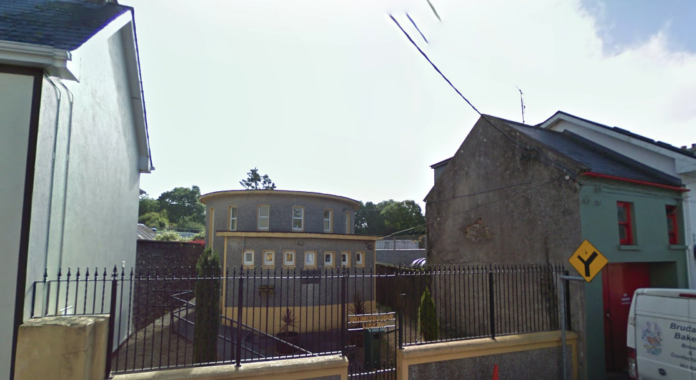
ON A QUIET night nearly a century ago, in the flickering shadows of a County Limerick town hall repurposed as a temporary cinema, a fire broke out that left 48 dead.
For many survivors and the generations the followed since, that night has been remembered as ‘The Burning’.
As the 100-year anniversary of the devastating Dromcollogher Cinema Fire approaches, a number of locals from the village and one University of Limerick (UL) author are taking a difficult look back, delving into the history of an acute disaster and its long lasting effects on the small Limerick community.
It all happened during a crowded screening on September 5, 1926, when a candle fell over, igniting the highly-flammable nitrate film that was used in early cinemas.
Despite the safety regulations of the day, the reel, housing the film shown on the night, called ‘The Decoy’, was not securely stored away in its proper tin boxes. This allowed the flame from the fallen candle to quickly spread, despite the efforts of onlookers to extinguish the growing blaze.
The flame caused a panic in the makeshift cinema – hosted in the L-shaped upstairs loft of a large building which often held dances and other community events in Dromcollogher, in which the only entrance and exit was a ladder to the outside.
Once the fire started and cinema-goers began to flee, they carried with them pieces of the burning reel — quickly and unwittingly setting the only exit aflame and effectively locking everyone inside.
It wasn’t long before improvised exits were also all either clogged or on fire, including the windows near the back of the loft, sealing the fate of 48 who died in the flame.
Commemorations
In light of the centenary of The Burning, a group dubbing themselves the Dromcollogher 26 have decided to delve into the history of the fire’s long-lasting psychological effects.
Many members of the group are descendants of survivors of the blaze and their loved ones.
Father Seán Ó Longaigh, a member of the commemoration committee and parish priest at St Mary’s Church in Askeaton, told the Limerick Post that the group’s main goal is to honour those who perished in the fire while commemorating the history of the survivors and the tragedy’s impact on the village.
Fr Sean pointed out that in 1926 Dromcollogher had roughly 500 residents, highlighting the impact 48 deaths would have had.
For reference, he said, the Stardust fire in Dublin, in a city with a population in 1981 of almost one million, also took 48 lives.
Dr Martin Walsh, a local historian and UL scholar, is on a similar quest to uncover untold stories of the Dromcollogher Cinema Fire.
Dr Walsh’s own grandmother, from nearby Athea, remembered the Dromcollgher fire as a teenager and would share the tragic tale with him as he was growing up.
However it wouldn’t be until years later, the UL historian says, while cataloguing the letters of David Keane, the Bishop of Limerick at the time of the fire, did Dr Walsh realise the scale and tragedy of the story of The Burning hidden in the documents and letters long since stowed away.
“How did people cope with it? How did it pass on to other generations? Was it talked about within families? Was it hushed up within families? Did they never mention it again? Was there a gaping void there afterwards?” he asked himself.
Since then, Dr Walsh has catalogued over 230 letters of condolence sent to the late Bishop David Keane at the time of the tragedy.
Dr Walsh plans to publish a book on The Burning by its anniversary in 2026, focusing on uncovering the long term effects of the tragedy.
‘Nobody ever spoke about it’
He recalls the experience recounted to him of one Dromcollogher man, who Dr Walsh himself knew, who, having grown up in the 50s and 60s, was forbidden from attending the cinema without any explanation.
“That trauma is still there in people’s minds,” Dr Walsh said, noting that natives were reluctant to attend cinemas for decades after the tragedy, regardless of any new safety regulations.
For many older Limerick residents, the night of the fire was their first experience with film. Dr Walsh points out that Limerick had first introduced cinema in 1898, and for some of the people at the cinema that fateful night, it was their first ever exposure to this new form of entertainment.
So far, Dr Walsh’s research has led him to several poignant individual stories, such as that of William Savage, who tragically entered the burning building believing his children were trapped inside.
“They weren’t, and he went in to try and rescue them,” Walsh explained. “He didn’t make it out.”
According to the Dromcollogher 26 group, who are fundraising for a memorial and commemoration day to mark the centenary, “nobody ever spoke about it” and “it was never discussed” are common responses when lifelong residents of Dromcollogher are asked about the aftermath of The Burning.
The committee is keen to “meet people who have information that was passed down in their families that they might be able to pass on to us — recollections of family members who lived at the time,” Fr Sean told the Limerick Post.
The Askeaton parish priest also mentioned the production of a publication by the Dromcollogher 26 committee, which will consolidate the memories and stories of The Burning.
Those with any memories, items, or information which may be of help to those looking to mark the tragic fire’s centenary can contact tmartinwalsh@gmail.com or dromcollogher26@gmail.com.
The local committee is also fundraising for centenary celebrations, with donations open on idonate.ie/fundraiser/dromcollogher26commemoration.









